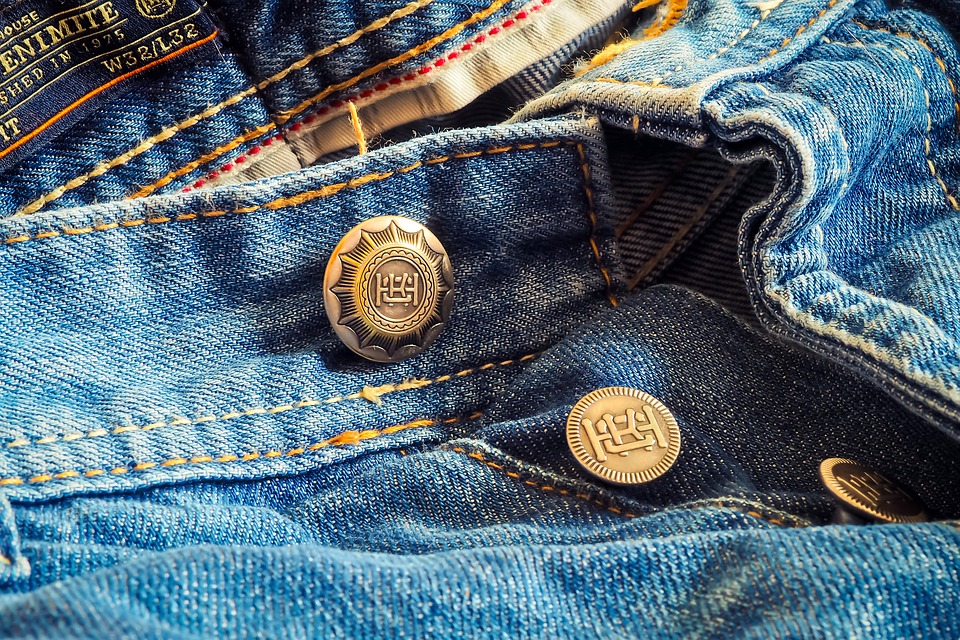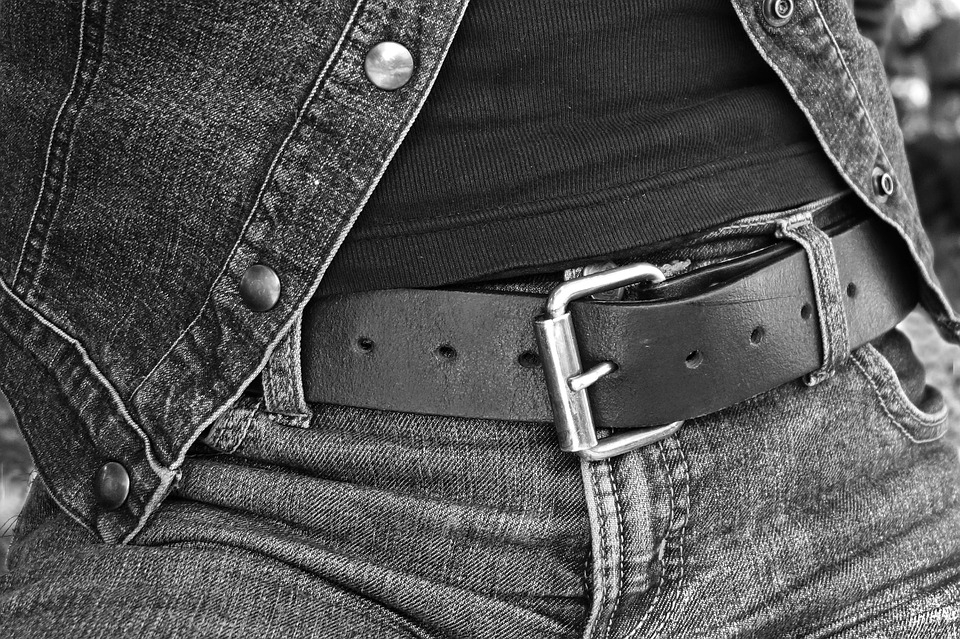The next time you put on a pair of your favorite jeans, look around the pockets and you’ll probably discover that they feature several small metal buttons. Known as rivets, they are common in both men’s and women’s jeans. They aren’t a new feature, however, as jeans have featured rivets for more than a century. This begs the question: Why do jeans have rivets? To better understand the purpose of rivets and why jeans have them, keep reading.
Rivets: The Basics
Rivets are small metal rings or buttons found in and around the buttons of denim jeans. Although there are different types, most consist of a circular-shaped piece of flat bronze metal with the middle poking out. They are generally smaller than the actual buttons on a pair of jeans. A rivet might be just one-third the size of a standard button. With that said, it’s not uncommon for a pair of jeans to have more than a dozen rivets but only three or four (or no) buttons. You can see if your jeans have rivets by inspecting the front and back pockets. If rivets are present, you’ll see these small metal rings around the pockets.
Aesthetics
Like many denim features, rivets improve the aesthetics of jeans. They introduce a new color and visual element to create a more refined appearance. Without rivets, a pair of jeans may look somewhat plain and boring. This problem easily solved by adding the small metal rings to the pockets. Rivets improve the aesthetic value of jeans, making them a highly sought-after feature among fashion-forward men and women. A standard pair of denim jeans features a light blue or indigo blue color. Because rivets are chrome- or bronze-colored, they naturally contrast with the color of the denim. This creates an attractive, eye-catching style that’s all-but-guaranteed to improve your outfit. Of course, increased aesthetic value — e.g. better-looking jeans — is just one reason that manufacturers add rivets to their jeans. There are other, more practical reasons for this feature.
Durability
You’ll find rivets in jeans dating all the way back to the late 1800s. Prior to their inception, jeans were more fragile and susceptible to damage. This is significant because back then most people worked in laborious jobs, so they needed trousers that could withstand the hands of time. But without rivets, many people discovered that their jeans were falling apart, forcing them to have them repaired or replaced. A tailor named Jacob Davis came up with a solution to this problem: She sewed rivets into areas of the jeans that received the greatest stress, such as the pockets and, in some cases, the seams. The rivets supported these otherwise stressed areas, thereby protecting the jeans from damage and degradation.
Jeans today are manufactured using higher quality denim and better craftsmanship. Therefore, rivets aren’t exactly necessary. Even without them, a pair of high-quality, well-made jeans should last for years, especially when properly maintained. Like the tiny “watch pocket” found inside the standard pockets, though, rivets have become synonymous with denim jeans. As a result, manufacturers still add them to their jeans. Whether or not rivets are needed to make jeans more durable is open to debate. However, the fact remains that most jeans sold on the market today still feature the same rivets as those manufactured a century ago.
Protects From Fraying
It’s also worth noting that rivets protect the jeans’ denim fabric from fraying. Without rivets, the denim fabric in and around the pockets may catch on objects, resulting in frayed fabric. When this occurs, it’s oftentimes difficult to repair the damage. Assuming the fraying is small, you might be able to sew it back using a needle and thread. If it’s large, you’ll have to take your jeans to a professional tailor for repair.
You can protect your jeans from fraying, however, by choosing a pair that features rivets. The rivets help to secure the fabric around your pockets and other stressed areas so that it’s less likely to fray. Wearing jeans with rivets isn’t a surefire way to protect against frayed fabric, but it can certainly help to prevent it from happening. This is just one more reason to choose jeans with rivets.
Are There Disadvantages to Rivets?
There aren’t really any disadvantages to rivets in jeans, except for low-quality jeans. If a manufacturer uses cheap denim materials and poor craftsmanship to make a pair of jeans, the rivets may fall off. This is especially true when the jeans are washed and dyed multiple times. Each time the jeans are placed in the washing machine or dryer, there’s a risk that one or more rivets will fall off. The good news is that you can typically sew the rivets back into place. The bad news is that you may have trouble finding a rivet after it falls off. If you wash your jeans in the washing machine, inspect the rivets after taking them out. If you discover one or more rivets are missing, look at the bottom of your washing machine to see if they fell off. Ideally, you should recover the lost rivet or rivets so that you can sew them back into place.
The Bottom Line on Rivets
To recap, rivets are small metal rings or buttons found in and around the pockets of jeans. For more than a century, denim manufacturers have added them to increase the strength and durability of their jeans. Jeans manufactured today typically don’t need rivets for this purpose — modern jeans are made with higher quality denim materials and better craftsmanship — but manufacturers still follow the tradition of including them in their jeans. From skinny and straight-leg to boot-cut and relaxed fit, practically all styles of jeans have rivets.
Keep in mind that rivets are just a small feature found in denim jeans. When shopping for a new pair of jeans, you should pay more attention to the overall style as well as the fit.












